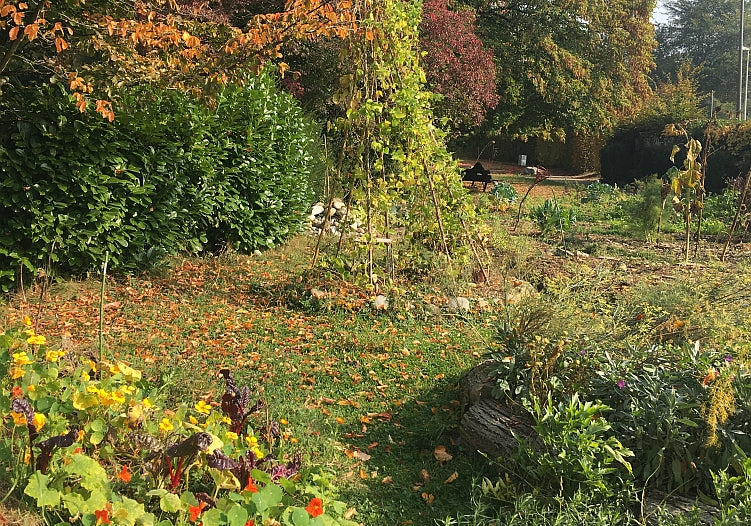Your shopping cart is currently empty.
| Subtotal | €0,00 |
| Shipping Rate | including VAT, excl. Shipping Rate |
| Total | €0,00 |
|---|
09.10.2023
Read article
Andernach is a city with 30 inhabitants and is located on the Rhine.
What is so special about Andernach?
Lutz Kosack, landscape planner for the Andernach city administration, describes in one Article his city as follows:
"In addition to tomatoes, we grow salads, chard, beans and herbs. And persimmons, bananas and grapes grow on the old city wall. Instead of "entering prohibited" we say in Andernach: "picking is allowed". And all in organic quality ."
Gardens in cities are not uncommon. Public gardens, which the city administration creates itself, do.

Kosack writes: “The main focus is on the public green spaces. In addition to an attractive design of the urban green spaces, these should also take on ecological, economic and aesthetic functions in the sense of multifunctionality. In the concept of the 'Edible City', this applies as 'Center of life again with 'Food' to make it tangible. "
The aim was also to make public green spaces more creative in light of a difficult budget situation and to promote urban biodiversity.
How does that fit together? To create added value for the residents and save money at the same time?
Recognition and support from the population
Kosack writes that the areas are maintained by the Perspektive gGmbH, a local long-term unemployed employment and qualification company. Increasingly, however, the goal is to include citizens in the responsibility. Based on civic engagement, clubs, senior citizens and schoolchildren, for example, can also be involved in the maintenance of certain areas.
In the beginning, so-called urban planning problem areas were deliberately chosen: places that had a poor quality of stay and were also associated with a lot of work for the municipal construction depot.
These problem areas then became more and more popular with the population.
Kosack writes: “Over time, the recognition of the project grew and the areas expanded. A self-regulating harvesting system set in. Discussions took place in the areas, recipes were exchanged - the vegetable areas developed into meeting places for people of all ages and cultures. "

Edible parks for the cities of the future?
How about if there were small edible plants in many cities? For example tree commons? Places where people can meet to harvest fruit, berries or nuts and exchange ideas? Places where young people can relate to nature and our food again? Such tree commons could connect us to our history, to times when gardens and trees made important contributions to nutrition. And who knows: Maybe the importance of local food will increase again, then it would be good if there were already many trees in our settlements.
See also the text on this topic: City trees of the future.
For inspiration
Here is another Ted talk about what is probably the first edible city: How we can eat our landscapes. In 2008 this project was created in Todmorden under the name Incredible edible.
Andrew Hunkeler
Dipl. Social and cultural anthropologist with a focus on sustainable and participatory green space design in cities. (More about the author).
My vision is to bring together: people and trees, nature and culture, population and urban authorities.
If you have any questions, suggestions, interesting stories or exciting knowledge on this topic, please write to me: andreas@baumbad.de. I'm looking forward to your message!
Do you want more tree knowledge?
That might interest you
Great idea, easy handling and everything from ordering to delivery.
Michael K.
















